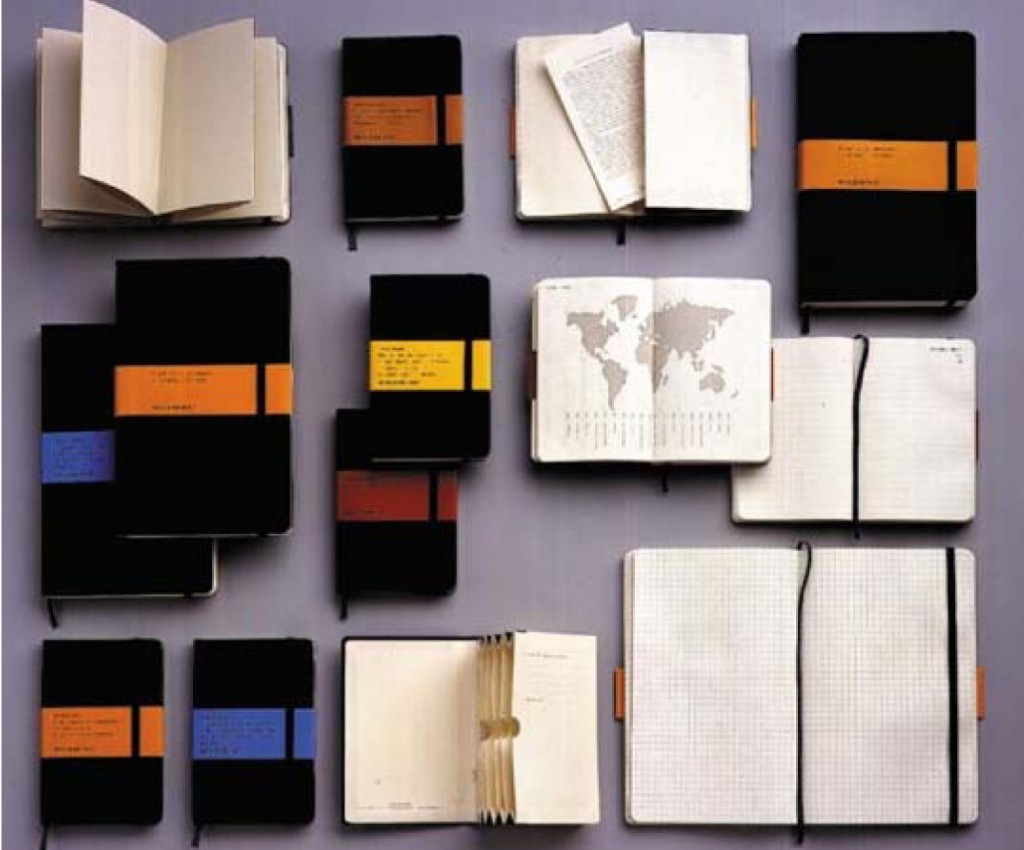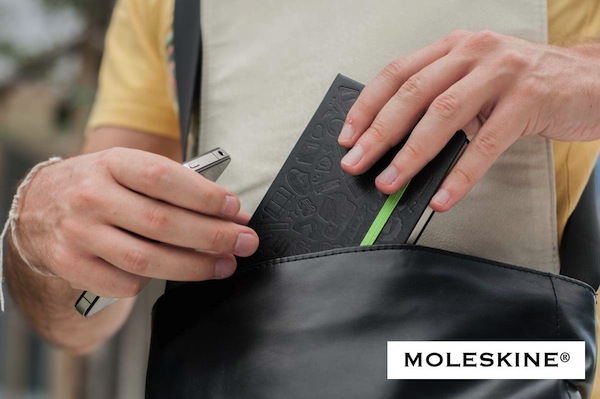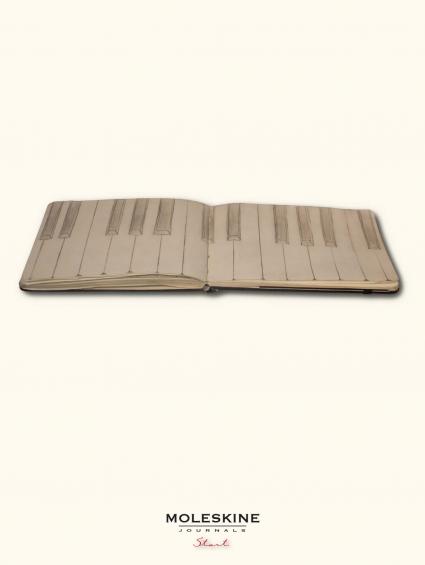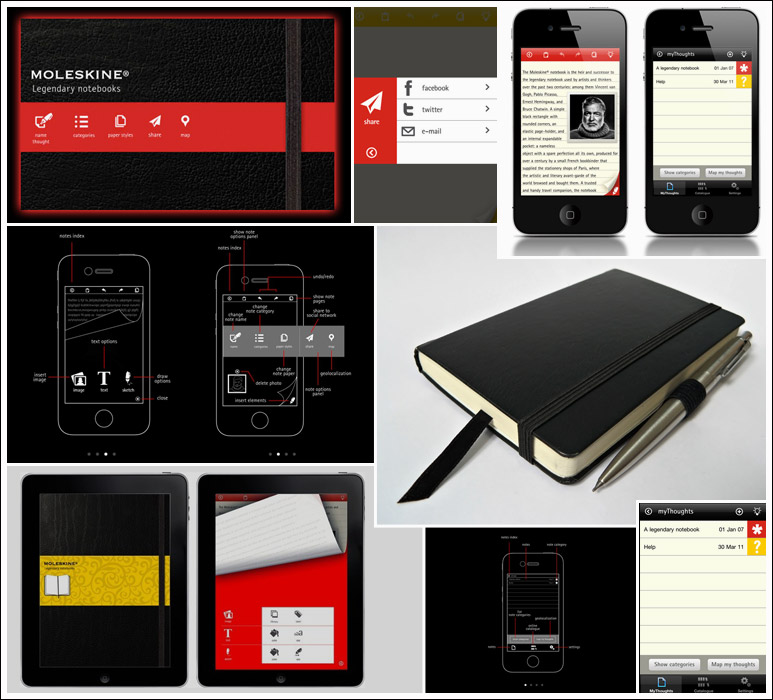iPad… no thanks!
|
Febbre da iPad? Pensi di non poter fare a meno di segnare i tuoi appunti se non su un touch-screen? Allora questo non fa per te, per chi, invece, subisce ancora il fascino di matita e carta, basta entrare in libreria e guardare bene ed in un angolo ci sarà sicuramente un espositore Moleskine con le classiche agendine di pelle nera con l’elastico. Un piccolo scrigno che con la sua “pelle di talpa” (‘mole skin’, come li chiamava Bruce Chatwin scrittore de “Le vie dei canti”), in realtà un fustagno di tela di cotone con cui è realizzata la copertina, protegge e racchiude i tuoi appunti e i tuoi pensieri, proprio quelli della tua vita. Lo stesso taccuino che Ernst Hemingway ha utilizzato per scrivere “Il vecchio e il mare”…sembra quasi di sentire l’odore di salsedine che accompagnava la sua mitica agendina, magari mentre parlava con un vecchio pescatore scrivendo il celebre romanzo, mescolato al profumo di menta, rhum e lime del mitico Mojito… e che sicuramente avrà più di una volta bagnato le sue pagine. Mettere la matita su una pagina bianca di un Moleskine è come essere con Picasso in un raffinato caffè letterario di Montmartre, mentre disegna una delle pagine del Carnet de Paris conservato al Museo Picasso di Barcellona, o nei vicoli della capitale catalana in calle Avignon con le “demoiselles” che scrutano stupite l’artista intento ai disegni preparatori della Opera Prima del Cubismo. Tutte queste atmosfere in un semplice taccuino con le pagine a righe ed una copertina nera? Certo… anzi di più! Non stiamo parlando di un block notes qualunque da tenere in borsa o nella tasca della giacca, al di là dell’alone di leggenda che esso ha acquisito nel tempo. Si tratta di un taccuino prodotto in una piccola manifattura francese a conduzione famigliare a Tours che ha chiuso nel 1986, interrompendo così la vita dei taccuini degli intellettuali, ma solo per una decina di anni. Nel 1997, infatti, la “Modo&Modo” editrice di Milano decide di riportare in vita questo storico taccuino, iniziandone la produzione con 5000 pezzi, che in pochi anni diventeranno milioni di taccuini venduti in più di 50 paesi nel mondo. I taccuini Moleskine sono disegnati in Italia e stampati, assemblati e cuciti per lo più in Cina, ma anche in Italia, Francia, Turchia. La produzione è quindi frutto di una combinazione di lavoro artigianale a mano e lavoro industriale automatizzato. Il colore naturale della carta è dovuto alla sua manifattura realizzata senza l’utilizzo di cloro.
E così l’offerta di Agende si amplia nei formati, dal classico pocket 9×14 centimetri, ai più grandi planner mensili sempre con l’inconfondibile elastico e gli angoli arrotondati che evitano che le pagine si arriccino ai quaderni per archiviare le recensioni dei vini o dei film fino ai taccuini con le piantine delle più importanti città del mondo. Chissà quanti, con un trend assolutamente positivo di diffusione della micro elettronica, computer palmari e cellulari sempre più arricchiti di funzioni di pianificazione ed organizzazione Agenda – per non parlare di chat su internet, e-book ed appuntamenti sui social network digitali – avrebbero scommesso sulla ristampa, e sul conseguente successo, di una agendina cartacea. Sicuramente la scommessa è vinta a suon di vendite, fra l’altro ad un prezzo non certo popolare. Il successo del brand Moleskine è indiscusso, tanto da costringere il digitale ad imitare la tradizionale carta stampata con un’applicazione i-Phone che da’ la possibilità di ricreare sul supporto digitale i quadernetti. Il layout riproduce il taccuino: il fascino è simile, ma aumentano naturalmente le funzioni multimediali. Un buon modo per chi non vuole distaccarsi mai dalla sua Moleskine, nemmeno quando utilizza il cellulare.
Ma una Moleskine vera in borsa con la sua copertina morbida al tatto e con il fascino della sua carta avorio dagli angoli arrotondati sarà difficile da imitare, così come non si cancellano i ricordi migliori e gli appunti da segnare sulle sue pagine.
Fabio Contillo
iPad… no thanks!
iPad fever? You cannot mark your notes if not on a touch-screen? Then this is not for you. For those who still suffers from the charm of pencil and paper just walk to the library and look around, You’ll fine for sure be a Moleskine exhibitor with the classic diaries of black leather with elastic. A small casket with his “moleskin” (‘mole skin’, as he called Bruce Chatwin writer of “The Songlines”), actually made in cotton fabric, protects and contains your notes and your thoughts, the ones of your life. The same notebook that Ernest Hemingway has used to write “The Old Man and the Sea”: You can almost smell the salt air that accompanied his legendary little black book, perhaps while talking to an old fisherman and writing the famous novel, mixed with scent of mint, rum and lime of the legendary Mojito … and that will certainly make wet its pages more than once. Put the pencil on a blank page of a Moleskine is like being with Picasso in a refined literary cafes of Montmartre, while drawing one of the pages of Carnet de Paris, now in the Museo Picasso in Barcelona, or in the streets of the Catalan capital in Calle Avignon with “demoiselles” peering, perhaps amazed, the artist intent on preparatory drawings of the First Work of Cubism. All of these atmospheres in a simple notebook with lined pages and a black cover? Sure … even more! We’re not talking about any notebook to keep in your purse or jacket pocket, beyond the aura of legend that it has acquired over time. This is a notebook manufactured in a small French family run bookbinder which ended at Tours in 1986, thus interrupting the life of the notebooks of intellectuals, but only for about ten years. In 1997, in fact, the “Modo & Modo” publisher of Milan decided to revive this historical Notebook, by starting the production of 5000 pieces, in a few years become million notebooks sold in more than 50 countries worldwide. The Moleskine notebooks are designed in Italy and printed, assembled and sewn mostly in China, but also in Italy, France, Turkey. The production is thus the result of a combination of craft work by hand and automated industrial work. The natural color of the paper is due to its manufacturing achieved without the use of chlorine. And so the offer of Agenda expands in sizes, from the classic pocket 9×14 cm, the largest monthly planner always with the unmistakable elastic and rounded corners that prevent pages from curling to notebooks to store wine or reviews film to the notebooks with the plants of the most important cities in the world. Who knows how, with a very positive trend of the spread of micro-electronics, handheld computers and cell phones more and more enriched functions of planning and organization Agenda – not to mention internet chat, e-books and digital events on social networks – would have bet on Printing, and the resulting success of a little black book paper. Surely the bet is won to the sound of sales, among other things, at a price not some people. The success of the brand Moleskine is undisputed, forcing the digital to imitate the traditional paper printed with iPhone and iPad application that ‘the possibility of recreating the digital support the notebooks. The layout plays the notebook, the charm is similar, but of course increase the multimedia functions. A good way for those who do not want to distance oneself from his Moleskine, even when using the phone. But a real Moleskine, with its cover soft to the touch and the charm of its ivory paper with rounded corners, it will be difficult to imitate, as it is impossible to erase the memories and notes marked in its pages.
Fabio Contillo
|




